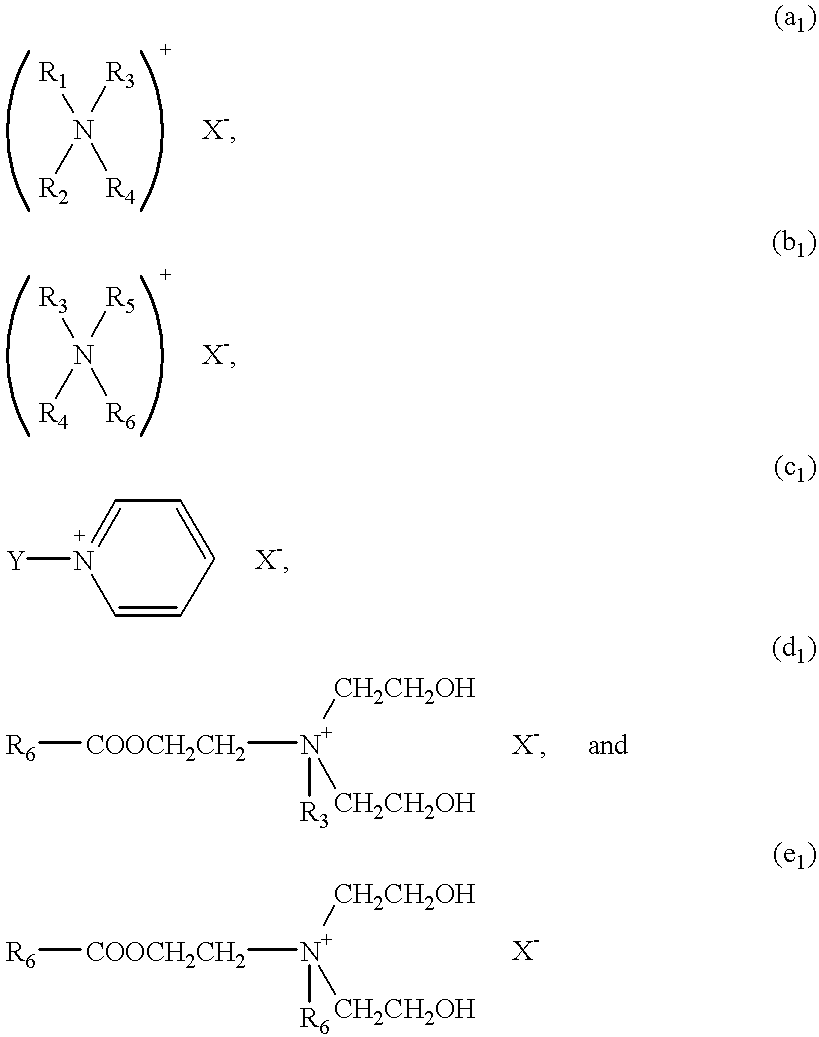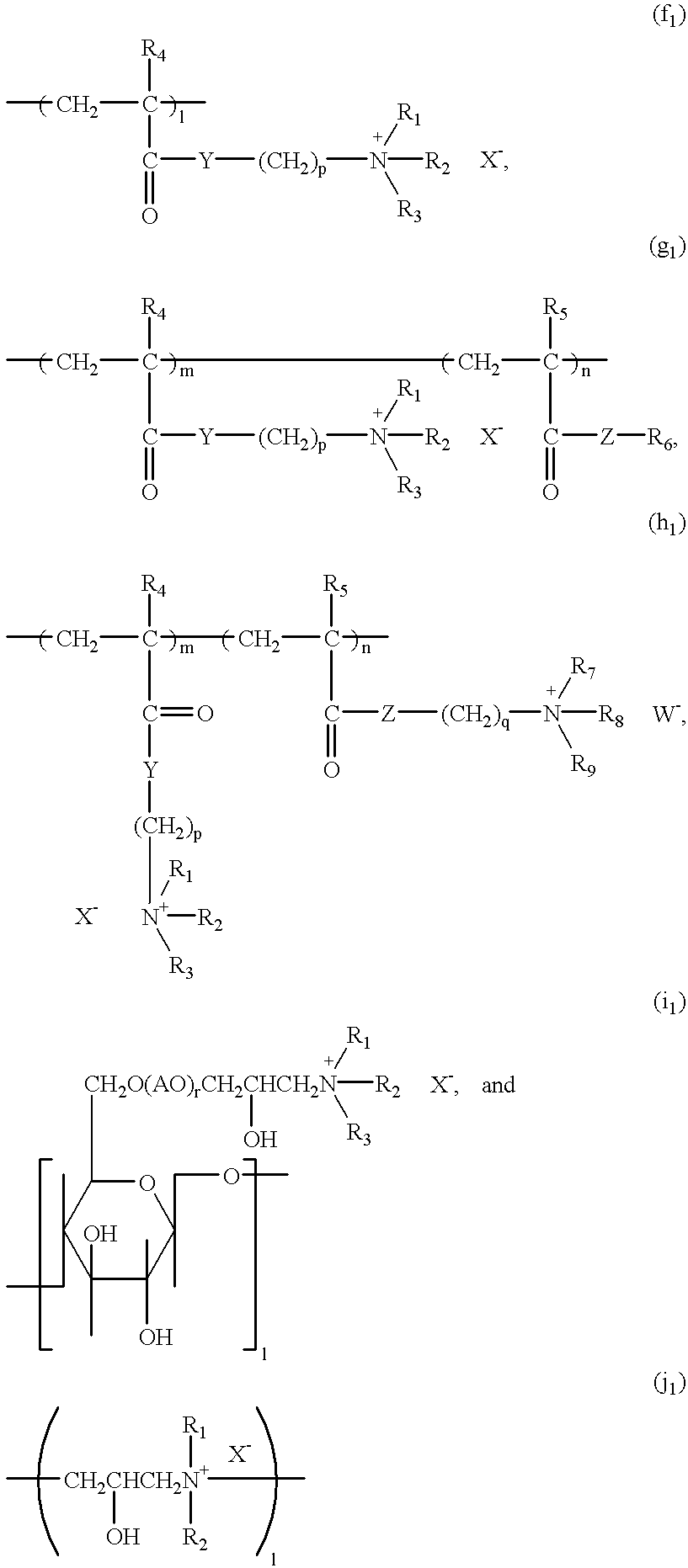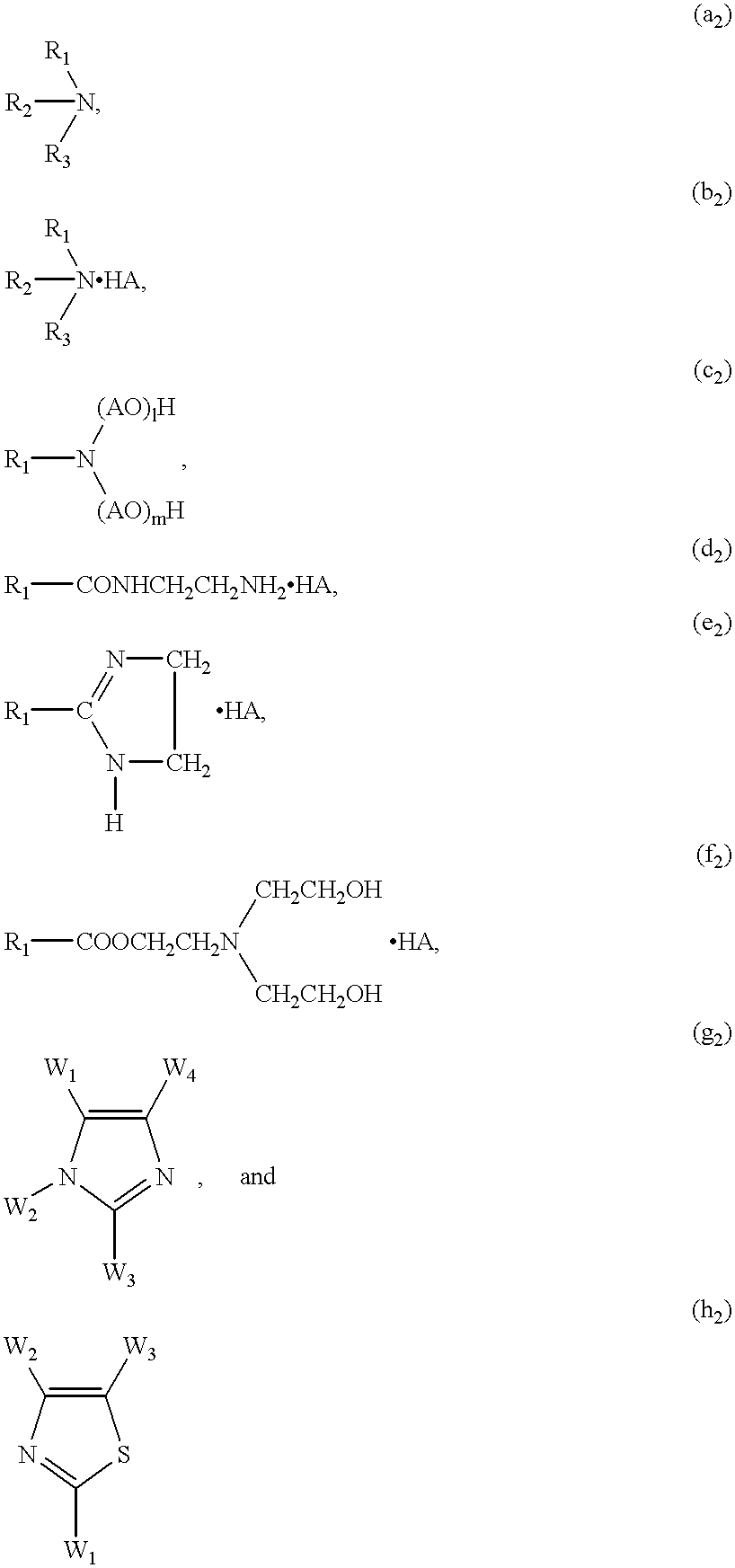Wastepaper deinking method using amine or acid salt of amine in the flotation stage
a technology of amine and flotation stage, which is applied in the field of deinking methods, can solve the problems of increasing the amount of foam to be rejected (or discharged) during flotation step, markedly high lathering power, and reducing the recovery of pulp, so as to reduce the production cost of deinked pulp, reduce residual ink spots, and improve the effect of whiteness
- Summary
- Abstract
- Description
- Claims
- Application Information
AI Technical Summary
Benefits of technology
Problems solved by technology
Method used
Image
Examples
example i-1
Waste papers (news papers / leaflets=75 / 25) recovered in a city were cut into pieces (2.times.5 cm). A given amount thereof was fed into a bench disintegrator. Then, warm water, 1% by weight (based on the waste papers) of caustic soda, 3% by weight (based on the waste papers) of sodium silicate, 3% by weight (based on the waste papers) of 30% by weight aqueous solution of hydrogen peroxide and 0.2% by weight (based on the waste papers) of an EO.sub.10 / PO.sub.10 block adduct of stearyl alcohol as a deinking agent were added thereto to prepare a mixture. The waste papers in the mixture were disintegrated at 40.degree. C. for 10 minutes to prepare a pulp slurry having a pulp concentration of 5% by weight. The resulting pulp slurry was maintained at 40.degree. C. for 60 minutes, and then warm water was added to the pulp slurry. Thus, a pulp slurry having a pulp concentration of 1% by weight was prepared. Hydrochloric acid was added to the pulp slurry to adjust the pH thereof to a value s...
example i-2
Deinking test was carried out according to the method described in Example I-1 by using cationic compounds shown in Tables I-1 and I-7. The result are shown in Table I-7.
According to the methods of Test Nos. 28 to 35 (the methods of the present invention) wherein the flotation is effected in the presence of a cationic compound shown in Table I-1 at a specific pH, as compared with those of Test Nos. 26 and 27 (comparative methods), there can be expected to attain an improvement in whiteness of the reclaimed paper, a reduction of residual ink spots in the reclaimed paper and an increase in the recovery of pulp, by the selective removal of ink in flotation.
example i-3
Deinking test was carried out according to the method described in Example I-1 by using cationic compounds shown in Tables I-2 and I-8. The results are shown in Table I-8.
According to the methods of Test Nos. 38 to 51 (the methods of the present invention) wherein the flotation is effected in the presence of a cationic compound shown in Table I-2 at a specific pH, as compared with those of Test Nos. 36 and 37 (comparative methods), there can be expected to attain an improvement in whiteness of the reclaimed paper, a reduction of residual ink spots in the reclaimed paper and an increase in the recovery of pulp, by the selective removal of ink in flotation.
PUM
| Property | Measurement | Unit |
|---|---|---|
| Fraction | aaaaa | aaaaa |
| Fraction | aaaaa | aaaaa |
| Fraction | aaaaa | aaaaa |
Abstract
Description
Claims
Application Information
 Login to View More
Login to View More - R&D
- Intellectual Property
- Life Sciences
- Materials
- Tech Scout
- Unparalleled Data Quality
- Higher Quality Content
- 60% Fewer Hallucinations
Browse by: Latest US Patents, China's latest patents, Technical Efficacy Thesaurus, Application Domain, Technology Topic, Popular Technical Reports.
© 2025 PatSnap. All rights reserved.Legal|Privacy policy|Modern Slavery Act Transparency Statement|Sitemap|About US| Contact US: help@patsnap.com



